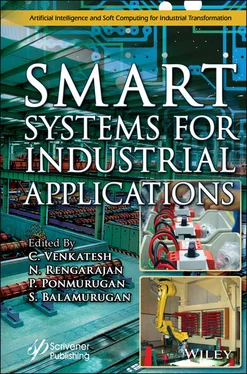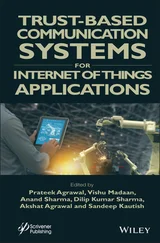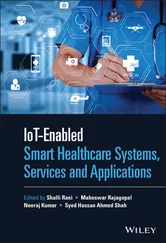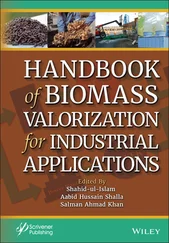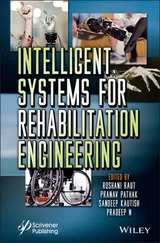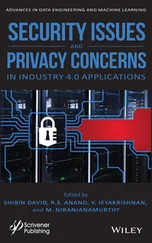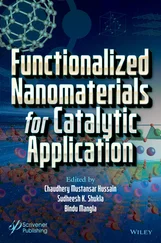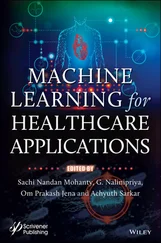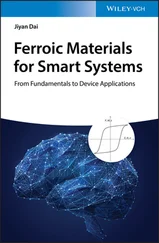Smart Systems for Industrial Applications
Здесь есть возможность читать онлайн «Smart Systems for Industrial Applications» — ознакомительный отрывок электронной книги совершенно бесплатно, а после прочтения отрывка купить полную версию. В некоторых случаях можно слушать аудио, скачать через торрент в формате fb2 и присутствует краткое содержание. Жанр: unrecognised, на английском языке. Описание произведения, (предисловие) а так же отзывы посетителей доступны на портале библиотеки ЛибКат.
- Название:Smart Systems for Industrial Applications
- Автор:
- Жанр:
- Год:неизвестен
- ISBN:нет данных
- Рейтинг книги:3 / 5. Голосов: 1
-
Избранное:Добавить в избранное
- Отзывы:
-
Ваша оценка:
- 60
- 1
- 2
- 3
- 4
- 5
Smart Systems for Industrial Applications: краткое содержание, описание и аннотация
Предлагаем к чтению аннотацию, описание, краткое содержание или предисловие (зависит от того, что написал сам автор книги «Smart Systems for Industrial Applications»). Если вы не нашли необходимую информацию о книге — напишите в комментариях, мы постараемся отыскать её.
The prime objective of this book is to provide an insight into the role and advancements of artificial intelligence in electrical systems and future challenges.
Audience
Smart Systems for Industrial Applications — читать онлайн ознакомительный отрывок
Ниже представлен текст книги, разбитый по страницам. Система сохранения места последней прочитанной страницы, позволяет с удобством читать онлайн бесплатно книгу «Smart Systems for Industrial Applications», без необходимости каждый раз заново искать на чём Вы остановились. Поставьте закладку, и сможете в любой момент перейти на страницу, на которой закончили чтение.
Интервал:
Закладка:
Table of Contents
1 Cover
2 Title Page
3 Copyright
4 Preface
5 1 AI-Driven Information and Communication Technologies, Services, and Applications for Next-Generation Healthcare System 1.1 Introduction: Overview of Communication Technology and Services for Healthcare 1.2 AI-Driven Communication Technology in Healthcare 1.3 AI-Driven mHealth Communication System and Services 1.4 AI-Driven Body Area Network Communication Technologies and Applications 1.5 AI-Driven IoT Device Communication Technologies and Healthcare Applications 1.6 AI-Driven Augmented and Virtual Reality–Based Communication Technologies and Healthcare Applications References
6 2 Pneumatic Position Servo System Using Multi-Variable Multi-Objective Genetic Algorithm–Based Fractional-Order PID Controller 2.1 Introduction 2.2 Pneumatic Servo System 2.3 Existing System Analysis 2.4 Proposed Controller and Its Modeling 2.5 Genetic Algorithm 2.6 Simulation Results and Discussion 2.7 Hardware Results 2.8 Conclusion References
7 3 Improved Weighted Distance Hop Hyperbolic Prediction–Based Reliable Data Dissemination (IWDH-HP-RDD) Mechanism for Smart Vehicular Environments 3.1 Introduction 3.2 Related Work 3.3 Proposed Improved Weighted Distance Hop Hyperbolic Prediction–Based Reliable Data Dissemination (IWDH-HP-RDD) Mechanism for Smart Vehicular Environments 3.4 Simulation Results and Analysis of the Proposed IWDH-HP-RDD Scheme 3.5 Conclusion References
8 4 Remaining Useful Life Prediction of Small and Large Signal Analog Circuits Using Filtering Algorithms 4.1 Introduction 4.2 Literature Survey 4.3 System Architecture 4.4 Remaining Useful Life Prediction 4.5 Results and Discussion 4.6 Conclusion References
9 5 AI in Healthcare 5.1 Introduction 5.2 Need of AI in Electronic Health Record 5.3 The Trending Role of AI in Pharmaceutical Development 5.4 AI in Surgery 5.5 Artificial Intelligence in Medical Imaging 5.6 AI in Patient Monitoring and Wearable Health Devices 5.7 Revolutionizing of AI in Medicinal Decision-Making at the Bedside 5.8 Future of AI in Healthcare 5.9 Conclusion References
10 6 Introduction of Artificial Intelligence 6.1 Introduction 6.2 Introduction to the Philosophy Behind Artificial Intelligence 6.3 Basic Functions of Artificial Intelligence 6.4 Existing Technology and Its Review 6.5 Objectives 6.6 Significance of the Study 6.7 Discussion 6.8 Applications of AI 6.9 Conclusion References
11 7 Artificial Intelligence in Healthcare: Algorithms and Decision Support Systems 7.1 Introduction 7.2 Machine Learning Work Flow and Applications in Healthcare 7.3 Commercial Decision Support Systems Based on AI IBM’s Watson 7.4 Conclusion References
12 8 Smart Homes and Smart Cities 8.1 Smart Homes 8.2 Smart Cities References
13 9 Application of AI in Healthcare 9.1 Introduction 9.2 Related Works 9.3 DL Frameworks for Identifying Disease 9.4 Proposed Work 9.5 Results and Discussions 9.6 Conclusion References
14 10 Battery Life and Electric Vehicle Range Prediction 10.1 Introduction 10.2 Different Stages of Electrification of Electric Vehicles 10.3 Estimating SoC 10.4 Kalman Filter 10.5 Estimating SoH 10.6 Results and Discussion 10.7 Conclusion References
15 11 AI-Driven Healthcare Analysis 11.1 Introduction 11.2 Literature Review 11.3 Feature Extraction 11.4 Classifiers 11.5 Results and Conclusion References
16 12 A Novel Technique for Continuous Monitoring of Fuel Adulteration 12.1 Introduction 12.2 Existing Method 12.3 Interfacing MPX2010DP with INA114 12.4 Results and Discussion 12.5 Conclusion References
17 13 Improved Merkle Hash and Trapdoor Function–Based Secure Mutual Authentication (IMH-TF-SMA) Mechanism for Securing Smart Home Environment 13.1 Introduction 13.2 Related Work 13.3 Proposed Improved Merkle Hash and Trapdoor Function–Based Secure Mutual Authentication (IMH-TF-SMA) Mechanism for Securing Smart Home Environment 13.4 Results and Discussion 13.5 Conclusion References
18 14 Smart Sensing Technology 14.1 Introduction References
19 Index
20 Also of Interest
21 End User License Agreement
Guide
1 Cover
2 Table of Contents
3 Title page
4 Copyright
5 Preface
6 Begin Reading
7 Index
8 Also of Interest
9 End User License Agreement
List of Illustrations
1 Chapter 1 Figure 1.1 eHealthcare system design. Figure 1.2 Impact of AI in different domains of healthcare. Figure 1.3 AI-based diagnosis process. Figure 1.4 ANN-based diagnosis model. Figure 1.5 Wearable devices in the health monitoring system (Adopted from [21]). Figure 1.6 Architecture of WBAN communication. Figure 1.7 AI-enabled WBAN architecture. Figure 1.8 IoT architecture for healthcare. Figure 1.9 AI-based remote healthcare management.
2 Chapter 2 Figure 2.1 Pneumatic position servo system. Figure 2.2 Phases in genetic algorithm. Figure 2.3 GA initialization process. Figure 2.4 Crossover procedure. Figure 2.5 Mutation. Figure 2.6 Fitness with crossover probabilities. Figure 2.7 Fitness with mutation probabilities. Figure 2.8 Flowchart of genetic algorithm. Figure 2.9 Genetic algorithm tool box. Figure 2.10 Control error. Figure 2.11 Control action. Figure 2.12 System output. Figure 2.13 (a) Control error for reference value 500 (error). Figure 2.13 (b) Control action for reference value 500 (error). Figure 2.13 (c) System output for reference value 500 (error). Figure 2.14 (a) Control error for reference value 500. Figure 2.14 (b) Control action for reference value 500. Figure 2.14 (c) System output for reference value 500 (error). Figure 2.15 (a) Control action for reference value 1,500. Figure 2.15 (b) Control action for reference value 1,500. Figure 2.15 (c) System output for reference value 1,500. Figure 2.16 Hardware setup of position servo system. Figure 2.17 CRO output waveform. Figure 2.18 CRO output waveform of 500 reference (Error). Figure 2.19 (a) CRO output waveform of 500 reference. Figure 2.19 (b) CRO output waveform of 1,500 reference.
3 Chapter 3Figure 3.1 Illustration of IWDH-HP-RDD scheme.Figure 3.2 Percentage increase in localization accuracy of the IWDH-HP-RDD schem...Figure 3.3 Percentage increase in warning data dissemination of the IWDH-HP-RDD ...Figure 3.4 Percentage decrease in localization error of the IWDH-HP-RDD scheme f...Figure 3.5 Percentage decrease in latency of the IWDH-HP-RDD scheme for varying ...Figure 3.6 Percentage increase in localization accuracy of the IWDH-HP-RDD schem...Figure 3.7 Percentage increase in warning data dissemination of the IWDH-HP-RDD ...Figure 3.8 Percentage decrease in localization error of the IWDH-HP-RDD scheme f...Figure 3.9 Percentage decrease in latency of the IWDH-HP-RDD scheme for varying ...Figure 3.10 Percentage increase in localization accuracy of the IWDH-HP-RDD sche...Figure 3.11 Percentage increase in warning data dissemination of the IWDH-HP-RDD...Figure 3.12 Percentage decrease in localization error of the IWDH-HP-RDD scheme ...Figure 3.13 Percentage decrease in latency of the IWDH-HP-RDD scheme for varying...
4 Chapter 4Figure 4.1 Fault prognosis process flow diagram.Figure 4.2 Frequency response curves of different analog filter circuits.Figure 4.3 Sallen-Key low-pass filter circuit.Figure 4.4 RUL prediction model curve of passive component.Figure 4.5 Curve fitting model of Sallen-Key low-pass filter without fault: (a) ...Figure 4.6 RUL prediction results: Sallen-Key low-pass filter: (a) R 1below the ...
5 Chapter 5Figure 5.1 Artificial intelligence in healthcare.Figure 5.2 Steps in developing a drug.Figure 5.3 Training and operation of an ANN for the drug Serotonin assembled int...Figure 5.4 A Cobot assisting the surgery.Figure 5.5 Picture of a moving robot used in suturing.Figure 5.6 Image processing analysis of a surgical image used to predict inimica...Figure 5.7 Collective process of surgical decision by AI using multimodal data u...Figure 5.8 Image of a CT scan [17].Figure 5.9 Medical imaging using AI in cardiovascular findings [19].Figure 5.10 Medical imaging using AI identifying hip fracture and wrist fracture...Figure 5.11 Medical imaging technique to spot pneumonia [18].
Читать дальшеИнтервал:
Закладка:
Похожие книги на «Smart Systems for Industrial Applications»
Представляем Вашему вниманию похожие книги на «Smart Systems for Industrial Applications» списком для выбора. Мы отобрали схожую по названию и смыслу литературу в надежде предоставить читателям больше вариантов отыскать новые, интересные, ещё непрочитанные произведения.
Обсуждение, отзывы о книге «Smart Systems for Industrial Applications» и просто собственные мнения читателей. Оставьте ваши комментарии, напишите, что Вы думаете о произведении, его смысле или главных героях. Укажите что конкретно понравилось, а что нет, и почему Вы так считаете.
